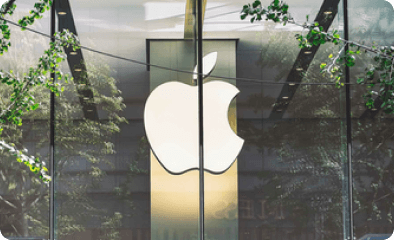
I’ve read through enough articles to realize marketing campaigns will take all shapes and sizes. Your campaign comes down to your overall marketing campaign goal. With that being said, I’ve identified seven key elements a successful campaign needs to contain to be able to execute effectively and efficiently.
For each element, I’ve included an example. This will help you visualize what it could look like inside a marketing campaign.
1. Business Objective
Every campaign should be tied to a business objective. For most BGAs, goals revolve around monetary objectives–i.e. increasing production and case counts–which is completely fine. So, if your goal is to increase linked benefit production by 20%, your marketing campaign should help you accomplish this.
Business Objective Example: Increase linked benefit production by 20%
Main Tip: Every marketing campaign needs to align to a business objective.
2. Marketing Campaign Idea
A marketing campaign is a component of a marketing plan. While a marketing plan is everything you’re going to do to reach your business objective, a marketing campaign is a measurable set of actions within a defined time period.
For example, you may realize that, in order to reach your 20% production goal, you will need to train your advisors on how to position linked benefit as a solution.
Marketing Campaign: Host a virtual linked benefit training event with Shawn Britt to train advisors on how to present linked benefit solutions.
Main Tip: A single marketing campaign is just one of the many you will need to create to reach your business objective.
3. Campaign Goal
Your marketing campaign needs a goal. Without a goal you won’t know how to measure your success. The goal doesn’t have to be monetary; you have already defined a monetary goal with your business objective. But you do need to determine what makes your marketing campaign a success. So what do you need before you reach a 20% increase in linked benefit production? Apps. You need apps.
Campaign Goal Example: Generate 10 linked benefit applications from the linked benefit training event.
Main Tip: Create a campaign goal that helps you attain a specific business objective.
4. Target Persona
You need to identify who your ideal target persona is going to be so you can attract the right prospect. Based on my own experience, when talking about LTC, I’m going to be more successful with a room full of financial advisors versus a room full of employee benefit advisors. Why? Because financial advisors are used to working with clients and their personal financial goals vs. employee benefit advisors are used to working with a clients business goals.
The reason for identifying your target persona is it will help in your messaging and get the right prospect in the room.
Target Persona: Fee Only RIA (If you do POS) or Financial Advisors working with clients with an average age of 55 with a net worth of $2MM +
Main Tip: Determine your target personas upfront to get more qualified prospects.
5. Key Performance Indicators
Next, you need to determine your key performance indicators (KPIs). These metrics will help you identify if your campaign is engaging or disengaging your advisors. These metrics will help you determine if this is a viable marketing campaign and/or if your messaging needs to be tweaked.
Key Performance Indicators:
- How many opens do my invitations receive?
- How many advisors signed up?
- How many advisors showed up?
- How many advisors stayed for the entire presentation?
- How many followed up with a potential client?
Main Tip: Set up your key performance indicators to help answer any questions you have about the business objective and marketing campaign.
6. Tactics
Your tactics are the different ways you will reach your prospects during a campaign. Depending on your marketing campaign, you may have multiple tactics or just one. You want to identify which tactics to use up front, so you know what all needs to be done to run a successful campaign..
Tactic Example: Use email marketing to invite existing clients. Use LinkedIn Ads to invite prospective advisors. Use physical invitations for high-end prospects. Follow-up presentation with a video recap and email to any prospective advisors.
Main Tip: You want to make sure you identify all the tactics you will use so that you have enough time to prepare them for execution.
7. Marketing Schedule
This is exactly what you think it is–a schedule of all the things you and your team are going to do. This helps keep your principals, sales team, marketing, and admin on schedule, and identifies their roles in the process. Make sure to include a follow-up meeting to review the results of the campaign.
Marketing Schedule: Set up a schedule showing when all emails will be sent, how long LinkedIn ads will run, when physical invitations will go out, when the campaign ends, and the follow-up meeting to review results.
Main tip: Set up a marketing schedule to keep everyone on track.
Conclusion
To be able to execute an efficient and effective marketing campaign, you need to contain the following seven elements:
- Business Objective
- Marketing Campaign Idea
- Campaign Goal
- Target Persona
- Key Performance Indicators
- Tactics
- Marketing Schedule
By incorporating all of these elements into your marketing campaigns, you will have a higher chance of success and a better opportunity to identify unique opportunities in the market.




